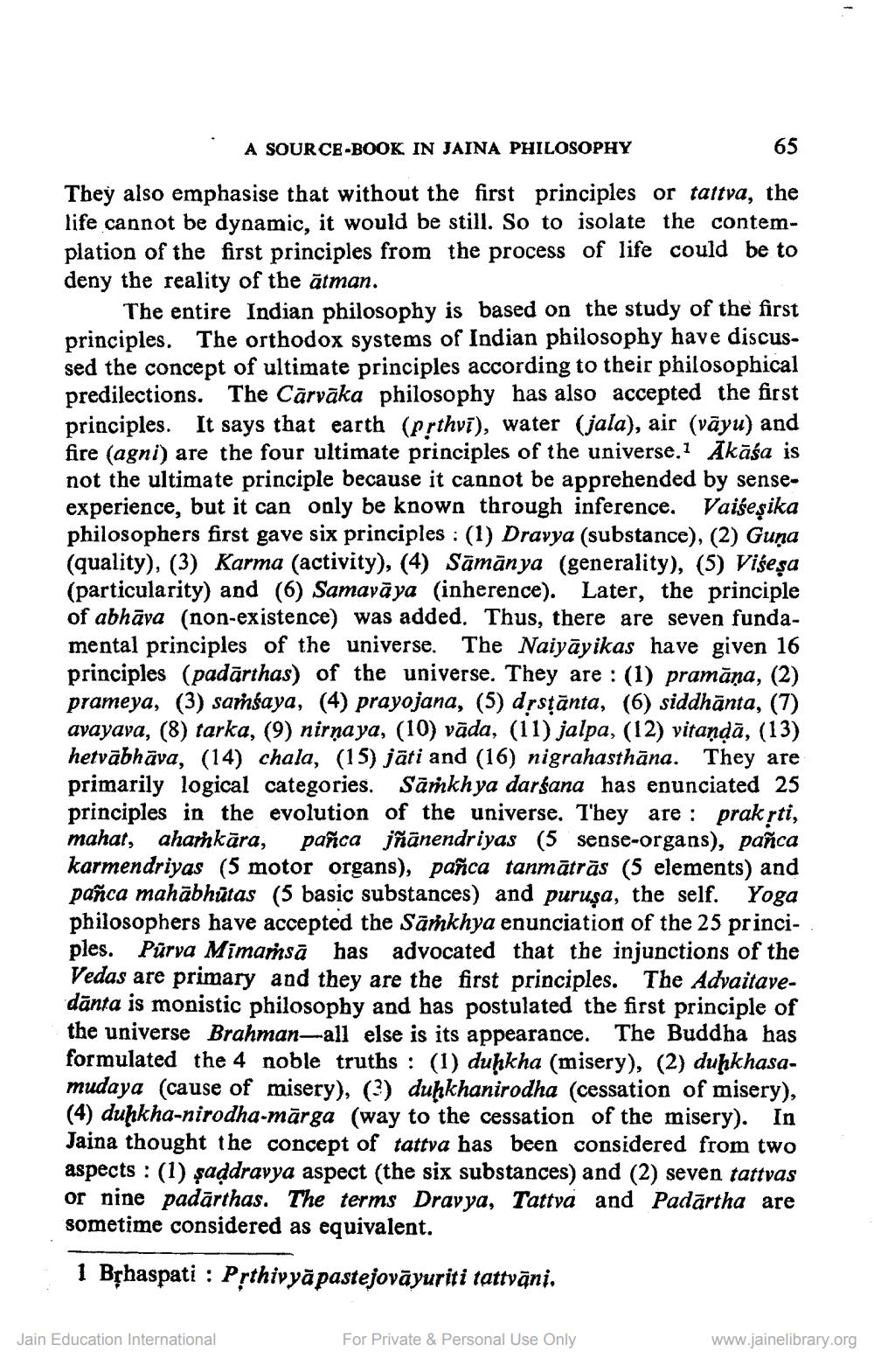________________
65
A SOURCE-BOOK IN JAINA PHILOSOPHY They also emphasise that without the first principles or tattva, the life cannot be dynamic, it would be still. So to isolate the contemplation of the first principles from the process of life could be to deny the reality of the ātman.
The entire Indian philosophy is based on the study of the first principles. The orthodox systems of Indian philosophy have discussed the concept of ultimate principles according to their philosophical predilections. The Cārvāka philosophy has also accepted the first principles. It says that earth (prthvi), water (jala), air (vāyu) and fire (agni) are the four ultimate principles of the universe.1 Akāśa is not the ultimate principle because it cannot be apprehended by senseexperience, but it can only be known through inference. Vaiśeşika philosophers first gave six principles : (1) Dravya (substance), (2) Guņa (quality), (3) Karma (activity), (4) Sāmānya (generality), (5) Visesa (particularity) and (6) Samayāya (inherence). Later, the principle of abhāva (non-existence) was added. Thus, there are seven fundamental principles of the universe. The Naiyāyikas have given 16 principles (padārthas) of the universe. They are: (1) pramāna, (2) prameya, (3) sarśaya, (4) prayojana, (5) drsţānta, (6) siddhānta, (7) avayava, (8) tarka, (9) nirnaya, (10) vāda, (11) jalpa, (12) vitandā, (13) hetvābhāva, (14) chala, (15) jāti and (16) nigrahasthāna. They are primarily logical categories. Samkhya darśana has enunciated 25 principles in the evolution of the universe. They are : prakrti, mahat, aharhkāra, pañca jñānendriyas (5 sense-organs), pañca karmendriyas (5 motor organs), pañca tanmātrās (5 elements) and pañca mahābhūtas (5 basic substances) and puruşa, the self. Yoga philosophers have accepted the Samkhya enunciation of the 25 principles. Pürya Mimarnsă has advocated that the injunctions of the Vedas are primary and they are the first principles. The Advaitavedānta is monistic philosophy and has postulated the first principle of the universe Brahman-all else is its appearance. The Buddha has formulated the 4 noble truths : (1) duhkha (misery), (2) duhkhasamudaya (cause of misery), (?) duhkhanirodha (cessation of misery), (4) duhkha-nirodha-mārga (way to the cessation of the misery). In Jaina thought the concept of tattva has been considered from two aspects : (1) şaddravya aspect (the six substances) and (2) seven tattvas or nine padārthas. The terms Dravya, Tattva and Padārtha are sometime considered as equivalent.
1 Bịhaspati : Prthivyāpastejovāyuriti tattvāni.
Jain Education International
For Private & Personal Use Only
www.jainelibrary.org




